What do you think of when you hear the word “satellite”? Maybe you think of a big metal spacecraft that circles our planet in space.
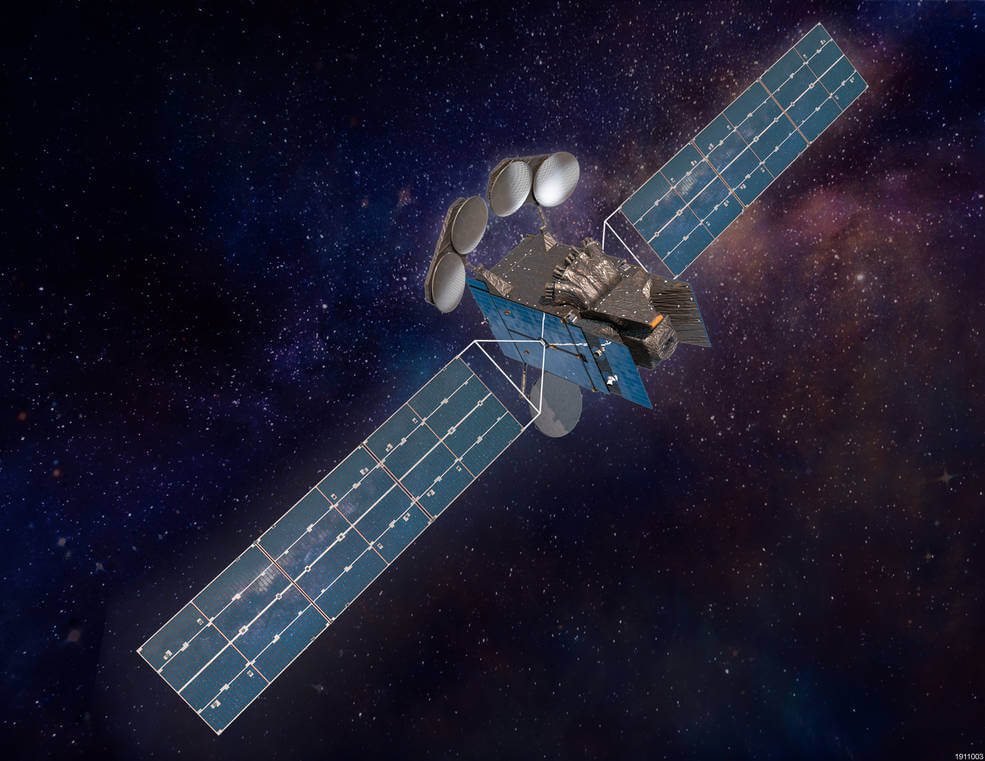
When we think of satellites, we usually think of something that looks like this. Image credit: Maxar Technologies
But, did you know that our Earth and Moon are satellites, too? A satellite can be any object that orbits a planet, star, or moon. An orbit is a regular, repeating path that one object in space takes around another one. So, Earth is a satellite, because it orbits the Sun! The Moon is also a satellite because it orbits Earth. But, usually, the word "satellite" refers to a machine that is launched into space and moves around Earth or another body in space.
Earth and the Moon are examples of natural satellites. Thousands of artificial, or man-made, satellites orbit Earth. Some take pictures of the planet that help meteorologists predict weather and track hurricanes. Some take pictures of other planets, the Sun, black holes, dark matter or faraway galaxies. These pictures help scientists better understand the solar system and universe.

This illustration shows NASA's Earth-observing satellite fleet. Image credit: Jenny Mottar/NASA
Other satellites are used for communications, such as TV signals and phone calls around the world. Have you ever tried to find your house, or the closest ice cream shop, on a map on your phone? Satellites help us do this with GPS! A group of more than 20 satellites make up the Global Positioning System, or GPS. These satellites can help figure out your exact location.
Why are satellites important?
The view that satellites like GPS have allows them to see large areas of Earth at one time. This means satellites can collect more data, more quickly, than instruments on the ground.
Satellites also can see into space better than telescopes at Earth's surface! That's because satellites fly above the clouds, dust, and molecules in the atmosphere that can block the view from the ground.

Clouds can block the view of space from the ground. Satellites fly high above the clouds, helping us see the universe better. Image credit: Pixabay/Pexels
What are the parts of an artificial satellite?
Man-made satellites come in many shapes and sizes. But most have at least two parts in common - an antenna and a power source. The antenna sends and receives information, usually to and from Earth. Just like a toy that requires batteries to work here on Earth, satellites need power, too! There are several types of power sources for satellites, such as solar panels or batteries. Solar panels are cool because they power the satellite by turning sunlight into electricity.
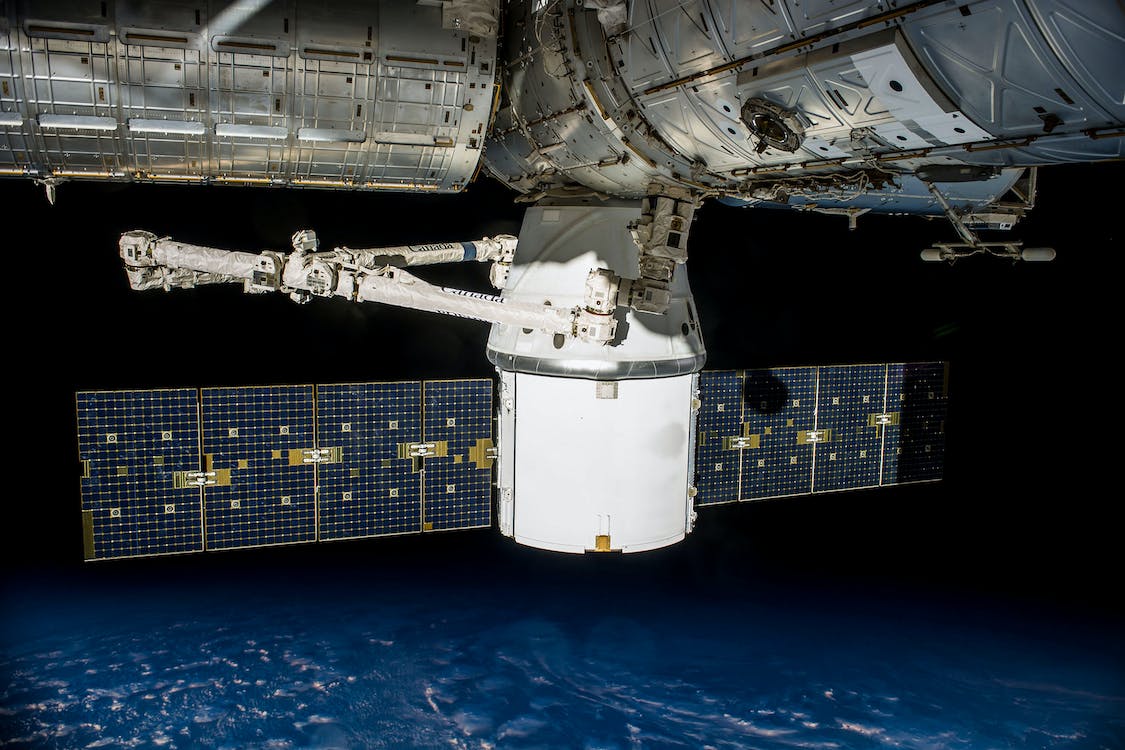
Satellites can have solar panels as power sources. Image credit: Pixabay/Pexels
Many NASA satellites carry cameras and scientific sensors. Sometimes, these instruments point toward Earth to gather information about its land, air and water. Other times, they face toward space to collect data from the solar system and universe.
How do satellites orbit Earth?
Most satellites are launched into space on rockets. A satellite orbits Earth when its speed is balanced by the pull of Earth's gravity. Without this balance, the satellite would fly in a straight line off into space or fall back to Earth.
Satellites orbit Earth at different heights, different speeds and along different paths. The two most common types of orbit are "geostationary" (jee-oh-STAY-shun-air-ee) and "polar."
A geostationary satellite travels from west to east over the equator. It moves in the same direction and at the same rate Earth is spinning. From Earth, a geostationary satellite looks like it is standing still since it is always above the same location.
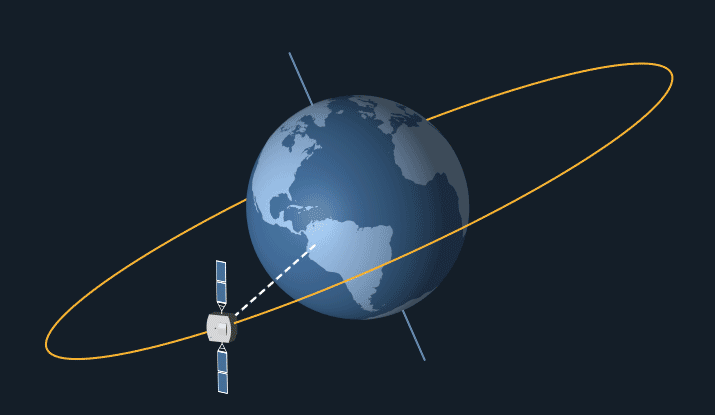
From Earth, a geostationary satellite looks like it is always in the same place, because it moves in the same direction and at the same rate the Earth spins. Image credit: NASA Solar System Exploration
Polar-orbiting satellites travel in a north-south direction from pole to pole. As Earth spins underneath, these satellites can scan the entire globe, one strip at a time.
Why don't satellites crash into each other?
Actually, they can! In February 2009, two communications satellites – one American and one Russian – crashed in space! This, however, is believed to be the first time two man-made satellites have collided accidentally.
But, don’t worry! NASA and other organizations across the world keep track of satellites in space. Collisions usually don’t happen because when a satellite is launched, it is placed into an orbit designed to avoid other satellites. But orbits can change over time, and the chances of a crash increase as more and more satellites are launched into space.
What is the history of NASA satellites?
NASA has launched dozens of satellites into space, starting with the Explorer 1 satellite in 1958. Explorer 1 was America's first man-made satellite. The main instrument aboard was a sensor that measured high-energy particles in space called cosmic rays.
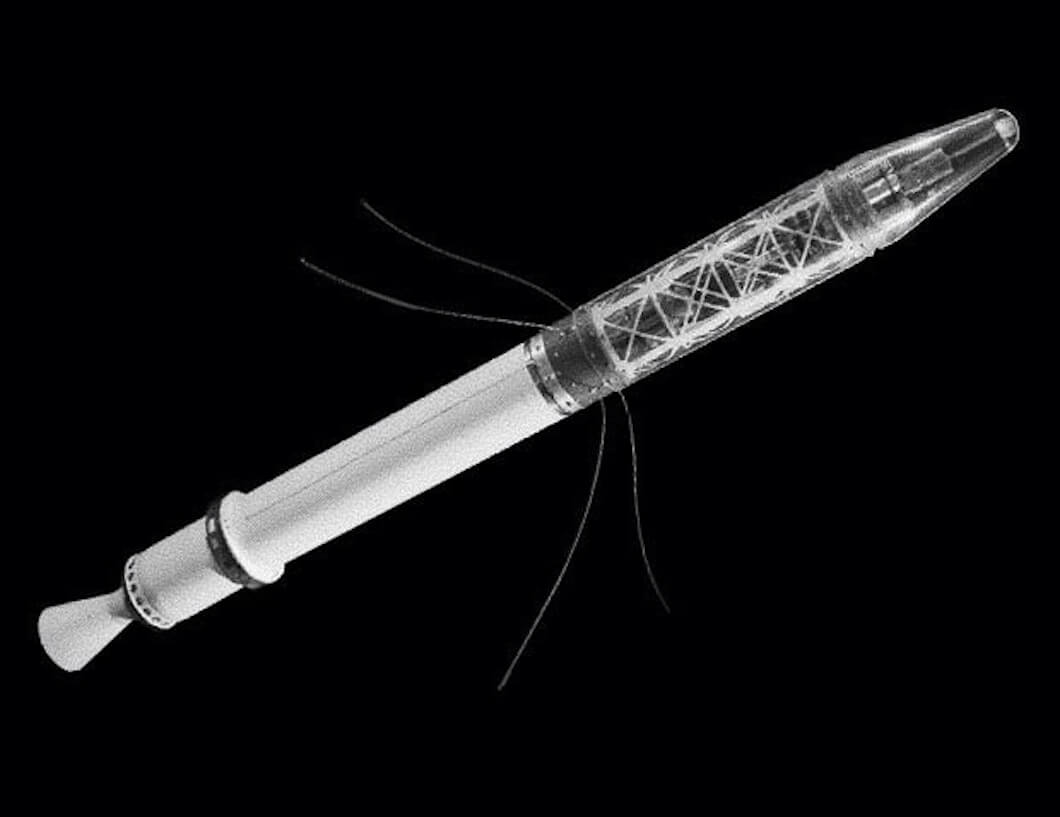 Explorer 1 was the first U.S. satellite and the first satellite to carry science instruments. Image credit: NASA
Explorer 1 was the first U.S. satellite and the first satellite to carry science instruments. Image credit: NASAThe first satellite picture of Earth came from NASA's Explorer 6 in 1959. TIROS-1 followed in 1960 with the first TV picture of Earth from space. These pictures did not show much detail. But they did show the potential satellites had to change how people view Earth and space.

How it started… This is the first-ever satellite image of Earth, captured by Explorer 6 on August 14, 1959. It looks just like a blur – but it showed the potential satellites had to change how people could view Earth from space. Satellites have become much better at taking pictures since then! Image credit: NASA Kennedy Center
How does NASA use satellites today?
NASA satellites help scientists study Earth, the other worlds of our solar system, and beyond.
Satellites looking toward Earth provide information about clouds, oceans, land and ice. They measure gases in the atmosphere, such as carbon dioxide. NASA's Orbiting Carbon Observatory 2, or OCO-2, launched in 2014 to measure carbon dioxide levels on Earth to better observe Earth's carbon cycle. NASA's OCO-2 also helps explore how measurements from space can predict future CO2 increases and its impact on Earth's climate.
Satellites also measure the amount of energy that Earth keeps inside the atmosphere, and the amount of energy the Earth sends back into space. And satellites monitor wildfires and volcanoes and their smoke.
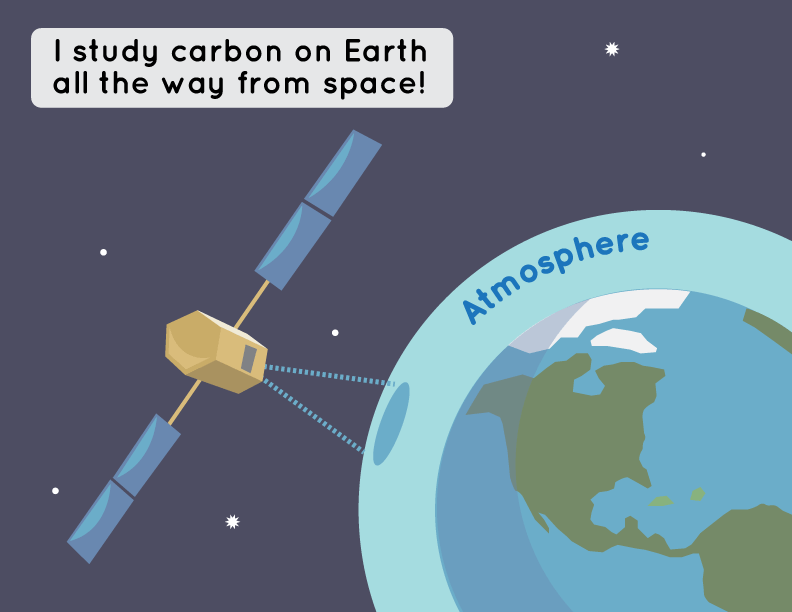
An illustration of OCO-2, a satellite that studies carbon dioxide, taking carbon dioxide measurements on Earth all the way from space. Image credit: NASA/JPL-Caltech
All this information helps scientists predict weather and climate. The information also helps public health officials track disease and famine; it helps farmers know what crops to plant; and it helps emergency workers respond to natural disasters. Did you check the weather forecast today? We know today’s weather thanks to satellites!
Satellites that face toward space have many jobs. Some watch for dangerous rays coming from the Sun. Others explore asteroids and comets, the history of stars, and the origin of planets. Some satellites fly near or orbit other planets. These spacecraft may look for evidence of water on Mars or capture close-up pictures of Saturn's rings.


